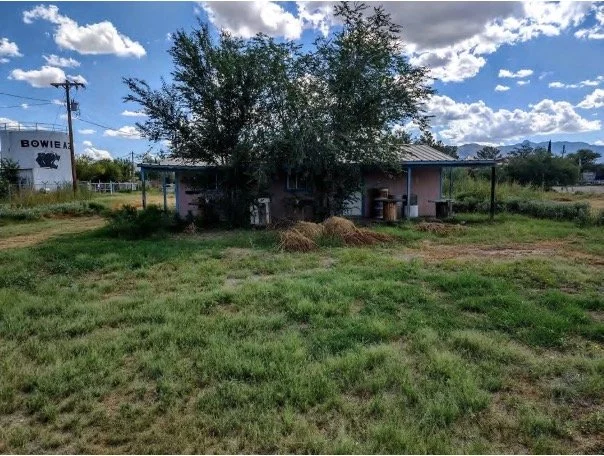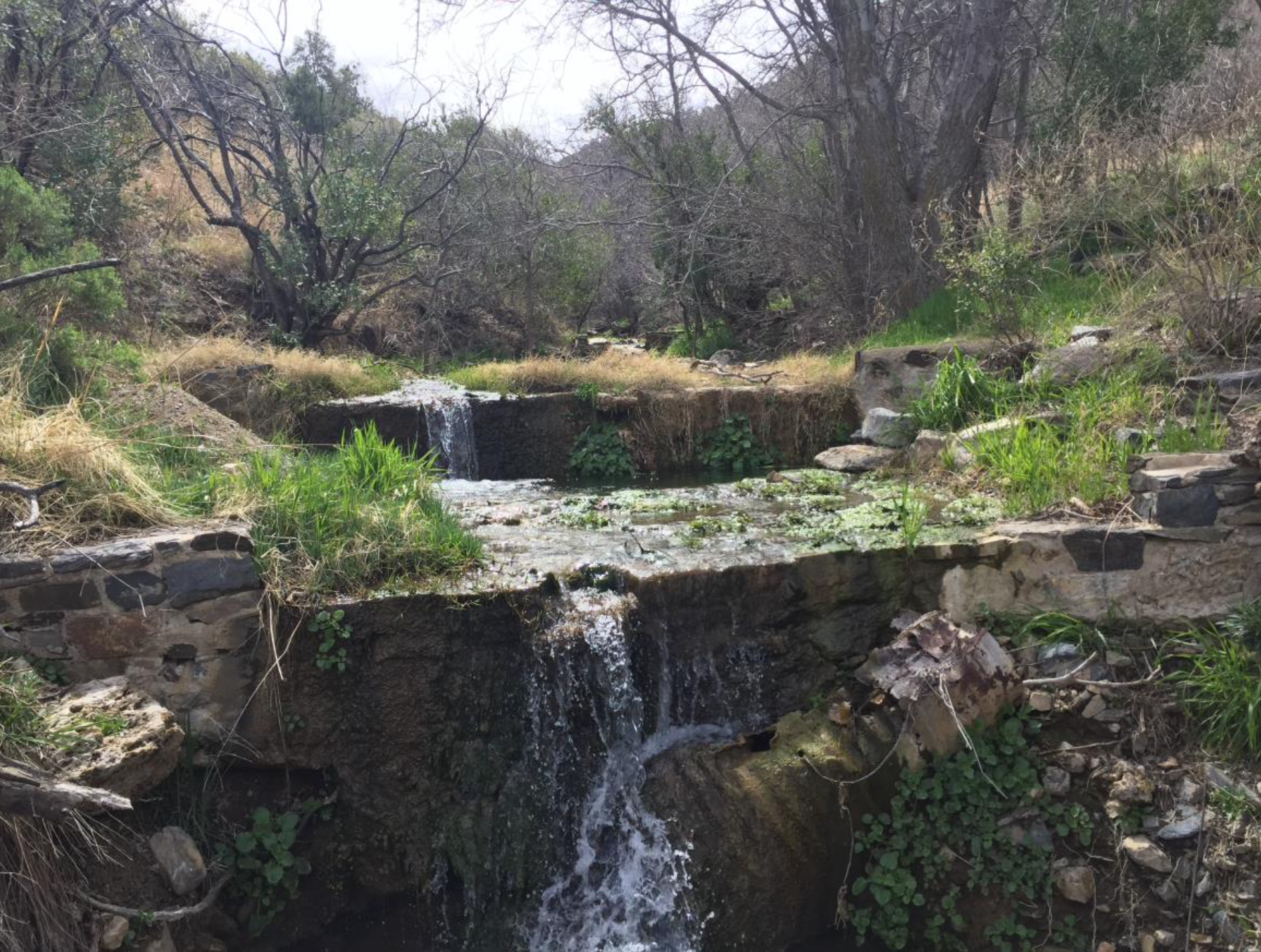ACTIVE PROJECTS
PROJECT OASIS
Phase 1: Operation Kitchen Gardens
The nearest supermarket is 24 miles away from this community of 435 people, with 45% of the population living below poverty level.
-
39% of global carbon emissions are generated from food production and distribution.
Desertification results in 5.24 billion tons of arable soil lost every year due to water scarcity and human activities such as tilling and the use of petrochemical fertilizers.
Trees are clear cut at rate of 48 football fields per minute for logging, agriculture, cattle ranching, mining, oil extraction and dam-buildin.
Groundwater is pumped by growing industries faster than aquifers are naturally replenishing.
Coal-based electricity produces 2.23 pounds of carbon emissions per kilowatt, for a total of 13.97 billion metric tons of carbon dioxide (GtCO2) worldwide in 2020.
-
To protect biodiversity
Repair ecological damage
Improve human health and wellbeing
Rebuild sustainable relationships between people and natural systems
Improve food and water security
Increase economic prosperity
-
Project Oasis presents a new model that will do just that, a model needed for food supply and distribution chains that will result in:
Lowered carbon emissions
Local food production and security
Lowered food cost to families
Improved nutrition
Less toxic health side effects
Protection of biodiversity
A slow down in the depletion of aquifers
By developing alternative water sources
And rebuilding arable soil
-
Earthworks & infrastructure retrofitting for storm and rainwater catchment
Low Impact Development on streets for irrigation
Metal roofs, gutters, cisterns, filters & valves on buildings
Local food production
Small Kitchen Gardens for each family home
Community High-Yield Food Forest
Build and protect soil throughout the town
Use resources in new ways
Waterless composting toilets
Solar Energy
Reduce dependency on groundwater, and use less
Focused on small-scale high-yield food production starting in Bowie, Arizona, Project Oasis will facilitate infrastructure and landscape modifications for participating families in small rural communities throughout arid regions around the world.
Project Summary
Location: Downtown Bowie, Arizona, USA
Project Type: Construct site-specific earthworks-based rainwater catchment and retention methods on public and private property.
Construct site-specific earthworks-based rainwater catchment and retention methods
Restore and protect soil viability
Reseed native vegetation without irrigation
Design and plant an educational demonstration site
Size: This project model will be reproduced in up to 100 Bowie homes and then expand to the nearby Apache Reservation.
Environmental benefits:
Engagement in community initiatives that also slow down global warming and carbon emissions.
Restoring ecosystem homeostasis.
Community benefits:
Significantly improve quality of life for small rural towns in arid regions through the availability of local healthy food sources.
Retrofitted rainwater catchment, storage and distribution infrastructure and earthworks reduces need on pumping ground water from lowering aquifers.
Irrigation systems and methods for high-yield organic food forestry on both private and municipal properties.
Learn about ecological sustainability and earth systems.
We aim to ensure water and food security within community food deserts through ecological education resulting in individual empowerment to make a difference in the world.
Status: In process
A community-based food forest will be installed at SkyHarvest Headquarters in central Bowie, AZ where families harvest food in addition to the fruit and nut trees planted on the streets, and herb gardens planted at home.
Conceptual LID Flood Mitigation Opportunities.
Upper Bear Gulch Erosion Control Structure Installation Project
Site 3
BOWIE, ARIZONA, USA
The primary purpose and desired outcome of this Plan are to guide installation of at least 50 rock erosion control structures for Borderlands Restoration Network’s (BRN) 2023, 2024, and 2025 summer youth program, Borderlands Earth Care Youth (BECY), along with workshops hosted jointly by BRN and Diamond Mountain Retreat Center (DMRC). The work described below will occur in the upper watershed of private land at DMRC, the project’s host and steward of 1,000 acres in the Dos Cabezas Mountains 120 miles east of Tucson, Arizona.
Defining the Problems and Summary of Solutions
-
Located in the Madrean Sky Island Archipelago, the Dos Cabezas Mountains feature a mix of desert and mountain ecosystems, home to diverse plant and animal species. The project aims to remediate the effects of historical land uses, such as grazing and fire suppression, by enhancing vegetation diversity.
-
The region’s geology—fault lines, slopes, and varied soils—creates ideal conditions for building erosion structures. These structures capture sediment and increase water infiltration, promoting vegetation growth. The project emphasizes collaboration among agricultural, historical, and spiritual groups, using watersheds as an organizing principle for ecological and social restoration.
-
Erosion Control Structures (ECS) slow water flow, increase soil moisture, and capture sediment, offering a cost-effective landscape restoration solution. Structures such as One-Rock Dams, Trincheras, Media Lunas, and Zuni Bowls are tailored to specific conditions. The project prioritizes six key drainages for erosion control.
-
A mature riparian forest near the main road needs protection from road runoff. The plan includes stabilizing exposed tree roots using rock and soil, safeguarding this forest, which plays an important role in the Nature Trail and broader restoration effort.
-
The plan is part of a larger effort to restore the DMRC watershed, using rock structures to manage water, support vegetation, and improve habitat connectivity. This collaborative project ensures ongoing restoration efforts that will benefit the environment and local communities in the Dos Cabezas Mountains.
Project Summary
Location: Bowie, Arizona, USA
Project Type: Erosion Control and Increased Water Infiltration above Bear Spring
The work described below is occuring in the upper watershed of private land at DMRC, the project’s host and steward of 1,000 acres in the Dos Cabezas Mountains 120 miles east of Tucson, Arizona.
Choices of drainages to work were made after extensive in-field and archival research to determine and coordinate the following variables:
Areas of greatest erosion control needs;
Availability of rock material for building;
Crew and tool access points;
Local needs of DMRC;
And the needs of summer youth crews from Douglas and Patagonia.
Size: 150 rock erosion control structures on 6 drainages and riparian forest protection are currently funded.
Environmental benefits:
Mitigate impacts of climate change and historical damage
Restore native vegetation and critical habitat
Enrich local biodiversity
Reduce erosion and improve soil quality
Community benefits:
Enhance economic viability through sustainability
Create local jobs
Educate public and youth
Grant Partners
National Fish and Wildlife Foundation
Borderlands Restoration Network
Diamond Mountain Retreat Center
Status: Active





